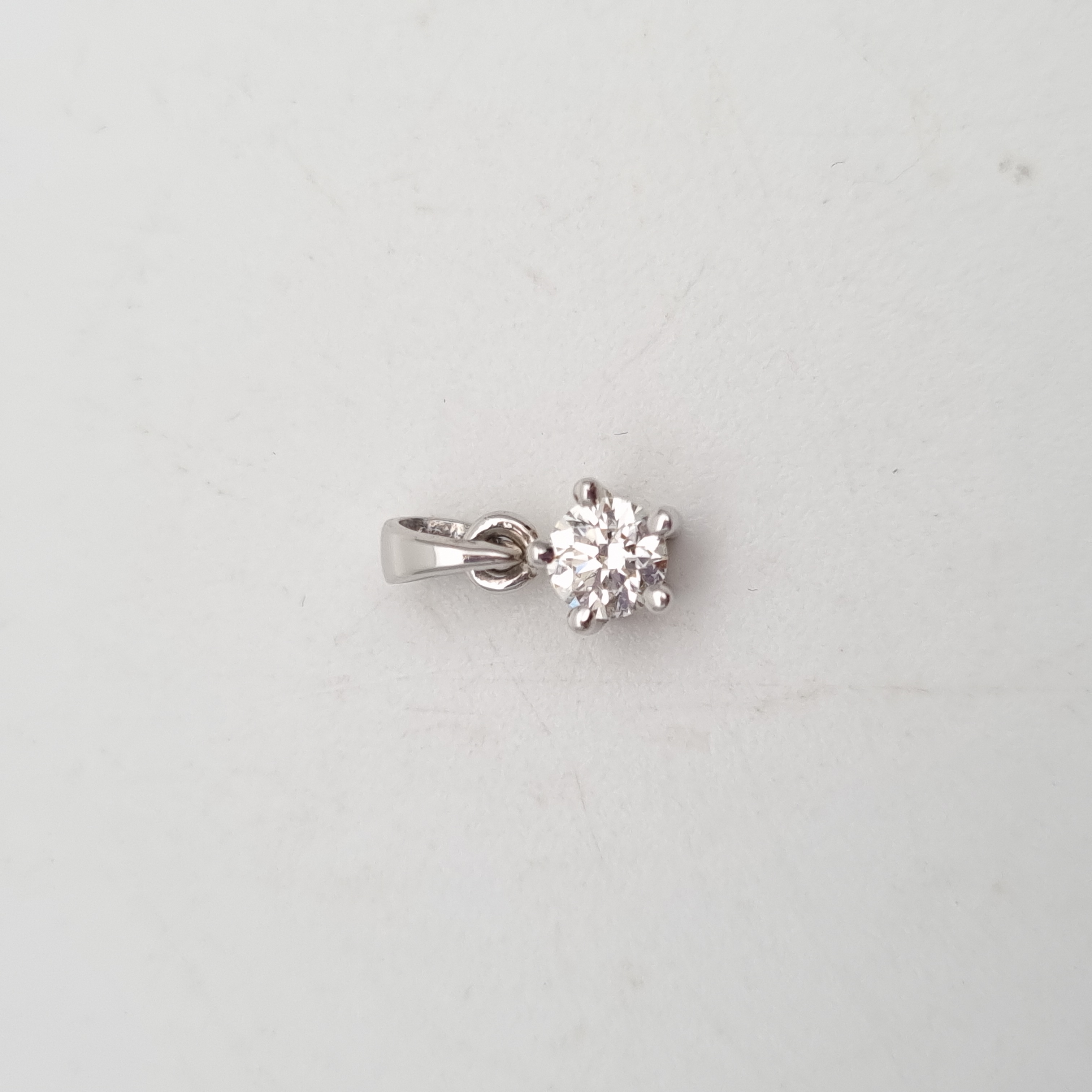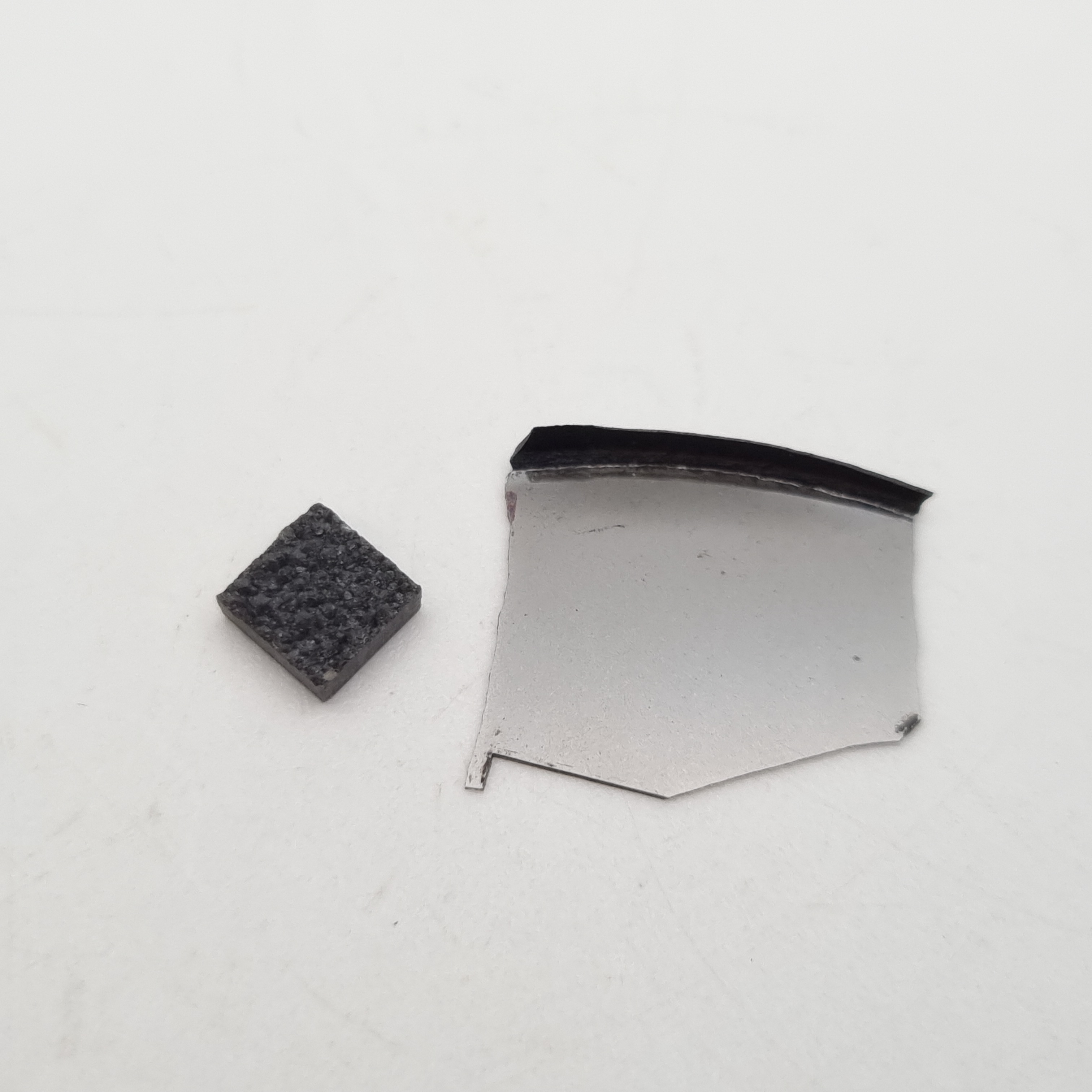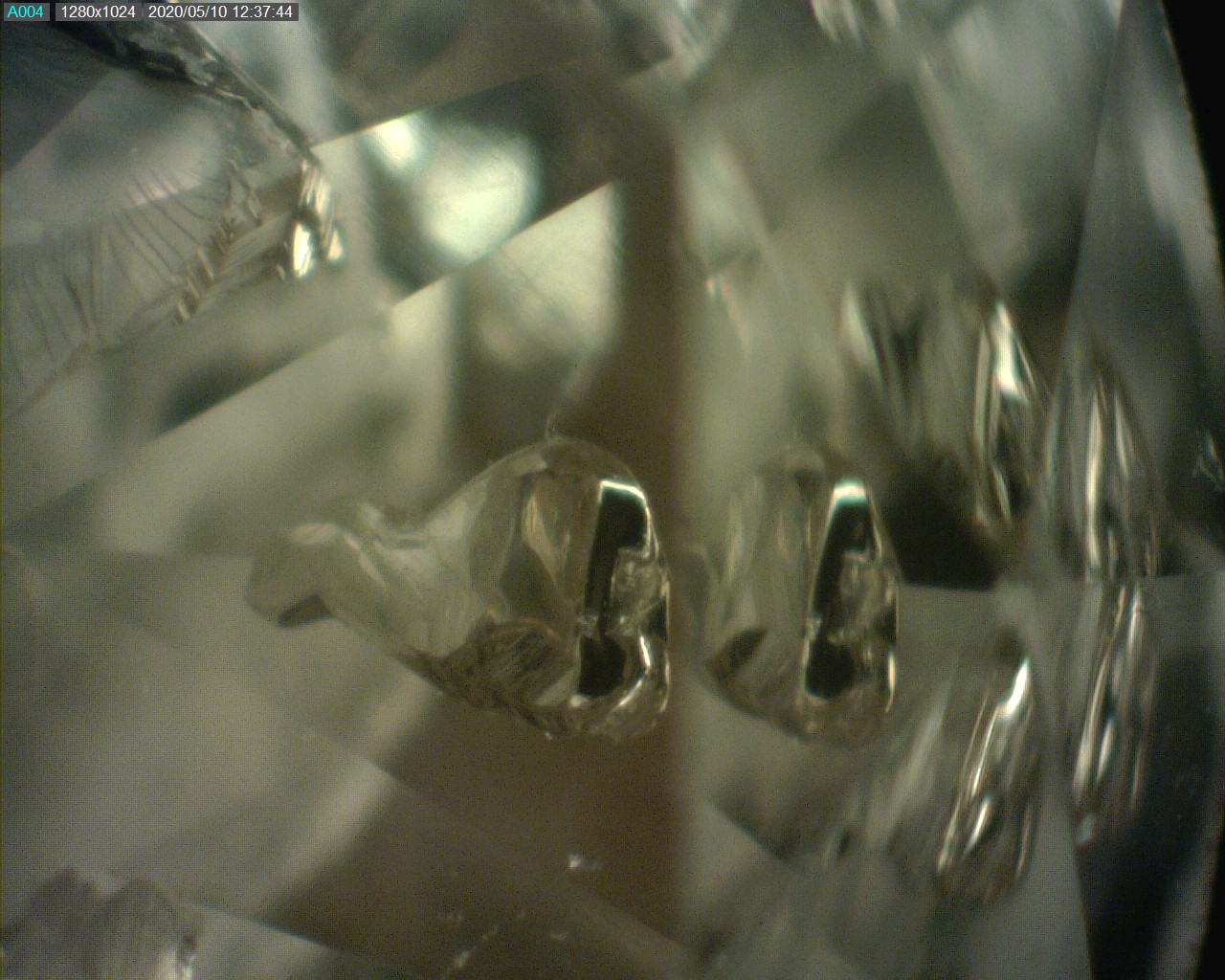

HPHT Synthetic Red Diamond, 0.655ct

CVD China made Synthetic white diamond, 0.162ct, set into 18K white gold pendant
After the successful effort to synthesise diamonds, for the past 50 years, tons of diamonds were reproduced mainly for industrial applications such as diamond saw blades and drill bits for oil and gas drilling. Back then, the only method to create diamonds was the High Pressure High Temperature (HPHT) method. As the name suggests, it implies extreme heat and pressure that simulates the natural conditions where diamonds are formed, up to 200 kilometres below the earth. This method, however, requires lots of energy to operate and was unable to produce diamonds with decent size and clarity, therefore was futile to compete against the economy of conventional diamond mining. Today, the advancement of technology significantly improved the creation of lab-grown diamonds with greater efficiency, using a method called Chemical Vapour Deposition (CVD).

HPHT synthetic diamond, 0.194ct, manufactured by Sumitomo (2000).

HPHT synthetic rough diamonds. Both diamonds shows a small diamond seed in the middle, where the growth process of the diamond starts.

CVD synthetic rough diamonds. Left: 0.769ct (China, 2010); Right: 0.805ct (2015).
With CVD’s greater competency, lab-grown diamonds have gradually gained friction in the market after successfully manufacturing high quality lab-growns that even trained gemmologists would not be able to distinguish without advanced instruments. Well equipped with noteworthy affordability and the highly favourable “ethical sourcing”, the price of lab-growns now can be 10 or more times less compared to a natural diamond. In the end, who does not like a low-cost diamond that shows no physical and optical differences to a natural diamond.

So far, there is a clear-cut basic knowledge amongst consumers about natural versus lab-grown diamonds from where they are formed and how they look alike. But how gemmological laboratories would determine a diamond’s origin is through examining deep within its chemical and crystal lattice.

Natural diamond under long wave ultraviolet lighting shows the growth zoning (x15 magnification).

Natural diamond under long wave ultraviolet lighting shows 3 growth sector (x15 magnification).
TYPES OF DIAMONDS
Chemically, diamonds are pure crystallised carbon. In most natural diamonds, it contains colour-causing elements such as nitrogen and boron turn diamonds yellow and blue respectively, though nitrogen being the most common trace element in them. Pink and red diamonds, however, are not caused by impurities but structural deformation which can be seen within the diamond through a microscope in the form of parallel bands known as “graining” or lamellae.
Whether impurities present or not, diamonds are divided into two categories to describe its chemical composition and atomic structure: Type l and Type ll. These two categories then further subcategorised into Type la and Type lb, and Type lla and Type llb.
Type la (laA & laB)
- Nitrogen atoms occur in aggregate formation.
- Type laA - nitrogen atoms in close proximity, usually adjacent to one another.
- Type laB - four nitrogen atoms symmetrically surround a vacancy that is typically occupied by a carbon atom.
- Makes up almost 95% of natural diamonds.
- Colourless, yellow, brown, pink, and violet, all can occur in type la.
Type lb
- Nitrogen atoms occur in isolation from one another.
- A rare type of diamond that shows excellent yellow colouration, often being termed as “canary” in the trade.
- Brown and orange diamonds often are type lb.
Type lla
- Contains no measurable nitrogen or boron impurities, chemically purest among all types.
- Usually colourless, but also found in grey, yellow, brown, and pink, all in pale tone.
-
Contains boron impurities replacing carbon atoms in the lattice.
-
Presence of boron responsible for blue colouration.
-
Also allows the diamond to conduct electricity.
It is important to distinguish natural diamonds into these four subdivisions, as it helps gemmologists to set apart natural diamonds from lab-grown. For what we know from lab-grown diamonds, each synthesis method produces specific diamond types, for the large part. For example, HPHT method almost always yields type lb, while CVD usually forms type lla. Oftentimes, when a lab-grown diamond is created, it may appear either colourless, brown, or yellow.

While colours of natural diamonds come from impurities or structural abnormalities, only HPHT products are able to be mixed with impurities during the growing process. As such: high amounts of boron creates blue diamonds; nickel sometimes creates green diamonds; and nitrogen creates intense yellow diamonds. CVD synthesis process on the other hand, is unable to do so and post-growth treatments often are required in order to get attractive fancy colours. Post-growth treatments involve HPHT, irradiation, annealing, or all of the above to obtain different colours.
TREATMENT ON DIAMONDS
Though post-growth treatments are not limited to only lab-grown, it is mainly applied on both methods of lab-grown diamonds. Individual or multiple treatments on different types of diamond, either natural or lab-grown, can produce different colour results. They work through altering and reorganising a diamond’s lattice defects. Here are some possible outcomes for each treatment and combinations:
- Putting products under high pressure and high temperature to alter the diamond's colour.
- Works on all types of diamond, except type la if were to make it colourless
- Type lb gives out yellow colour, type lla becomes colourless or pink, and type llb turns blue.
- This process involves exposing materials to radiation.
- Works for all types of diamond.
- Able to produce green to blue diamonds
- A form of heat treatment involving heating in a controlled temperature and cooling process, with lower temperature and pressure.
- Often used after the irradiation process.
- More commonly done to lower quality natural black diamonds as a standalone treatment.
- Generally type l diamonds exhibit intense yellow, orange, pink, and red.
- Rarely done on type ll diamond due to lack of impurities and resulting in pale colours.
- This combo can be applied on type la & lla diamonds.
- Causes the material to have intense pink, red, or orange colouration.
Once a diamond goes through one or more of the treatments above, the result is usually stable and permanent, and it can be really difficult to detect. Only well-equipped gemmological laboratories can verify whether a diamond has undergone treatments or not. While some may have less of a preference for treated gemstones, there is no denying that these procedures allow people to enjoy an otherwise invaluable piece of natural coloured diamond.

A set of treated natural diamonds of a variety of colours
FEATURES OF NATURAL DIAMONDS VS LAB-GROWN DIAMONDS
In contrast to the almost undetectable traces of the above treatments, gemstones occasionally host eye visible inclusions observable with or without magnification. Inclusions can be in the form of solid crystals, liquid, gas, or fractures and fissures. These are important sources of data which shed light on the conditions in which they are formed and chemicals that they are exposed to.
Natural crystal inclusions are the most conclusive in determining whether a gemstone is naturally formed or lab grown. Such inclusions are foreign minerals that can, but not always, retain their original shape and habit which can be extremely helpful since lab-grown gemstones would not have such inclusions. These natural inclusions can form before, during, or after the formation of the host gem.

Natural Diamond with included garnet crystal

Dark Crystal Inclusion in a natural diamond

Large feather (i.e. fracture) in a natural diamond

Natural skin of diamond showing surface growth features
HPHT productions occasionally have recognisable inclusions that can be identified by using a microscope or ultraviolet light (UV), inclusions such as metallic flux and cross-like growth or colour zoning. During the HPHT process, a carbon-based starting material would be placed in a crucible filled with molten metal flux consisting of iron, nickel, or cobalt. The purpose of the flux is to lower the temperature and pressure for the diamond’s growth. The molten flux may be enclosed within the synthesised diamond. HPHT flux inclusions looks like a highly metallic and opaque liquid, and if a diamond is highly included with these, it is able to be attracted by magnet.

HPHT synthetic diamond showing metallic inclusions x20 magnification
CVD, however, does not have metallic inclusions and is able to produce excellent clarity diamonds ranging from VVS2 to VS1. Their inclusions like “cloud” or “pinpoint” may not be noticeable due to their minute size, therefore further testing is often required. Most common inclusion in CVD products is non-metallic dark graphite pinpoints.

CVD China made synthetic diamond, 0.173ct showing a carbon spot on the table (x30 magnification)

CVD China made synthetic diamond, 0149ct showing growth mark at pavilion (x25 magnification)

CVD synthetic diamond with a feather (x20 magnification).
As lab-grown diamonds become increasingly available in the market due to increasingly sophisticated technology, everyone, from dealers to consumers, need to stay alert to ensure that they are buying what they want. While lab grown diamonds are gaining more acceptance from the general public, if you’re trying to buy a natural diamond, be sure to watch out for those who will try to sell you a lab grown diamond instead.
.
References:
https://www.gia.edu/doc/type-classification-system-of-diamonds-SU09.pdf
https://4cs.gia.edu/en-us/blog/digging-diamond-types/
https://jcjewels.com.au/pages/diamond-types-typei-typeii
http://www.gemmoraman.com/Portals/0/Documents/DiamondType.pdf
http://www.wtocd.be/en/Fundamental/Fundamental_research.html
Gem-A, UK
Photo Credits:
Mr. Andrew Neo, Curator - The Gem Museum
Mr. Tay Thye Sun, Far East Gem Lab Singapore
Illustrations of CVD process diagram and Diamond types by Ms. Loke Huiying
